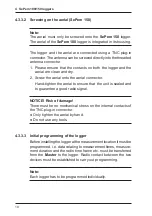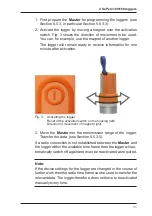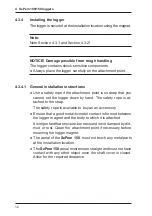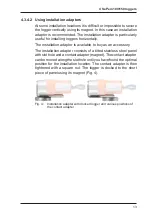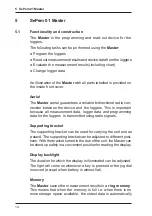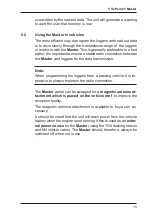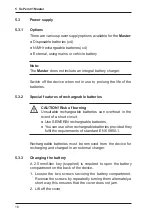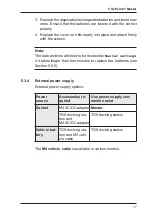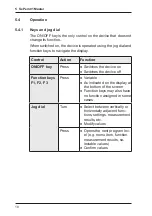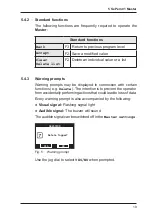
5
3 SePem system
3.3
Operating principle
3.3.1
Monitoring procedure (overview)
The system works according to the following principle:
1.
Program the logger for the first time (see
For each individual logger, specify where it will be used to
gather measurement data and at what times.
2. Install the logger at the measurement location (see Sec-
3. The logger works autonomously, i.e. it records data at the
predefined times.
4. Read out the measurement data using the
Master
(see Sec-
tion 5.5.2)
The logger will transmit the measurement results at regular
intervals within a prescribed period of time. The period of time
is referred to as the radio time frame and is specified during
programming.
To read out the data, the user must take the
Master
into the ra-
dio transmission range of the logger. The measurement results
will be transferred automatically from the logger to the
Master
as soon as the user enters the radio transmission range.
It is also possible to read out additional information relating
to the logger itself and to display a chart of the measurement
(Graphics).
5. Evaluate the measurement results immediately or later with the
Master
(see Section 5.5.2.2 – Section 5.5.2.4, Section 5.5.4)
3.3.2
Radio frequency for data transmission
When it is installed in a pit, the logger transmits its data out of
this pit. The range of the radio signals is heavily dependent on
the shielding effects of the shaft, especially the cover.
As a general rule, the radio signals can be expected to have a
range of
30 – 70 m
from the installation position. The range may
be extended up to 100 – 200 m for plastic covers.

















